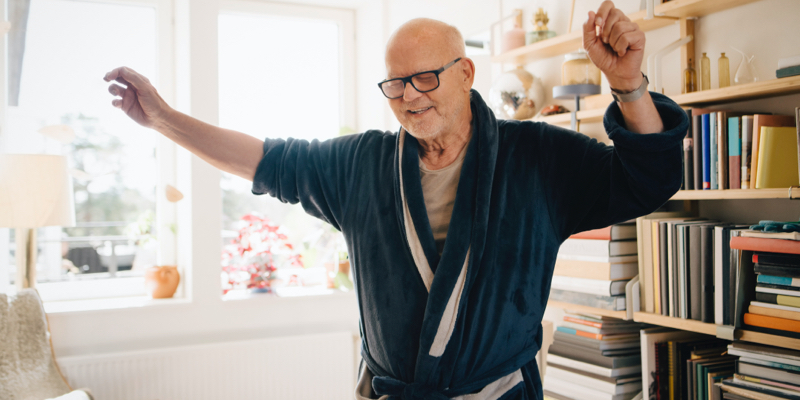Whether you are into watching The Bachelor or listening to Tchaikovsky, the shows we watch, music we listen to and books we read move us. They can move us to tears, give us the giggles, or prompt us to hold our loved ones a little bit closer.

Popular culture – and the arts more broadly – entertain us. But they also play an important role in helping us to recognise and process our experiences and emotions.
“The arts become a way of relating to our world, and giving our experiences shape,” explains Dr Fred Kiernan, an expert in music and emotions.
“So that can be a way of discovering what you are feeling, reflecting on what you are feeling, representing what you are feeling, and modifying what you are feeling.”
Reducing stigma
In a world where loneliness is commonly misunderstood and stigmatised, seeing different kinds of loneliness can play an important role in breaking down stereotypes and normalising the experience.
A survey conducted by the Mental Health Foundation in 2010 in the UK found that one third of participants would be embarrassed to admit to feeling lonely, with younger participants more likely to say they would feel embarrassed.
Other research indicates that lonely people tend to be perceived negatively by others. It confirms the notion that loneliness is perceived as a result of a personality flaw, or is somehow ‘your fault’.
“There isn’t a rich understanding of loneliness as a complex experience,” explains Fred, “So we can understand the different dimensions and give people more language and empower people to understand what they are experiencing in more nuanced ways through the creative arts.”
“Loneliness can occur for different reasons. For example, major life transitions like moving out of home, becoming a new parent, when a pet dies… Of course you feel lonely in those moments. You are human.”
“Allowing people to talk about loneliness more freely and destigmatise it is important. If you end up feeling lonely for a very long time, it can become chronic and lead to bigger health problems.”
Fred points out the film Zero Dark Thirty as one example. Jessica Chastain’s character, Maya, has been single-minded in her pursuit of the al-Qaeda leader Osama Bin Laden. In the scene after he is caught and killed, she boards a large military plane alone. She sits down, buckles up and starts to cry, a huge wave of tension seemingly released.
“I remember she’s so high functioning and she is so committed. She is so driven and brilliant. But it’s a really lonely moment,” says Fred.
“I quite like that representation of loneliness because it’s different to the usual stereotype of someone who doesn’t function in society. Her loneliness is very realistic. Normal people feel lonely, and you can be busy, and have a well-paid job and be interacting with people all day and still feel lonely because the quality of the connection is not there.”
Recognising and processing our emotions
Without the ability to identify what we are feeling, it can be hard to process and work through our emotions. From childhood, we learn to recognise and name emotions, but even as adults it is often difficult to acknowledge and describe how we are feeling.
Loneliness, in particular, can be difficult to identify because we have such pre-conceived ideas around who is lonely, and what that looks like.
The arts, says Fred, can help us discover our own emotions, including loneliness.
“William Reddy, author of The Navigation of Feeling — an important book in the field of the history of emotions — talks about emotions as being something that we discover as we express them.”
“By talking about how we feel – and I would argue as well by using the arts to ‘talk’ about how we feel not with words but with colours, or sounds or whatever – we’re actually navigating our emotions and discovering how we feel by doing that. By trying to articulate them, we come to know them better.”
This helps to explain why that break up song resonated so much when you were a heartbroken teenager, or the love song that reminds you of your partner seems to say it better than any of your own words could. Articulating emotions is hard – and things like music sometimes manage to capture exactly how you are feeling in that moment.
Bringing people together
The arts have been bringing people together for as long as we can remember, whether it be music, dance or storytelling. From indigenous dreamtime stories to modern day music festivals, the arts give us a way of being together, says Fred.
“Human beings have always had ceremonies and rituals and the arts are often connected with those things. Music, or theatre, or other art forms can provide the social glue for that situation that allows us to be connected with one another. They can create that experience of togetherness.”
So, next time you are craving connection, consider engaging with the arts, or even getting creative yourself. A movie with family, discussing the latest book you’ve read with a friend, or attending a live performance may just be the antidote you need.